Smart home technology is transforming contemporary living! Discover smart home appliances’ definition, operation, and advantages regarding convenience, security, and energy savings.
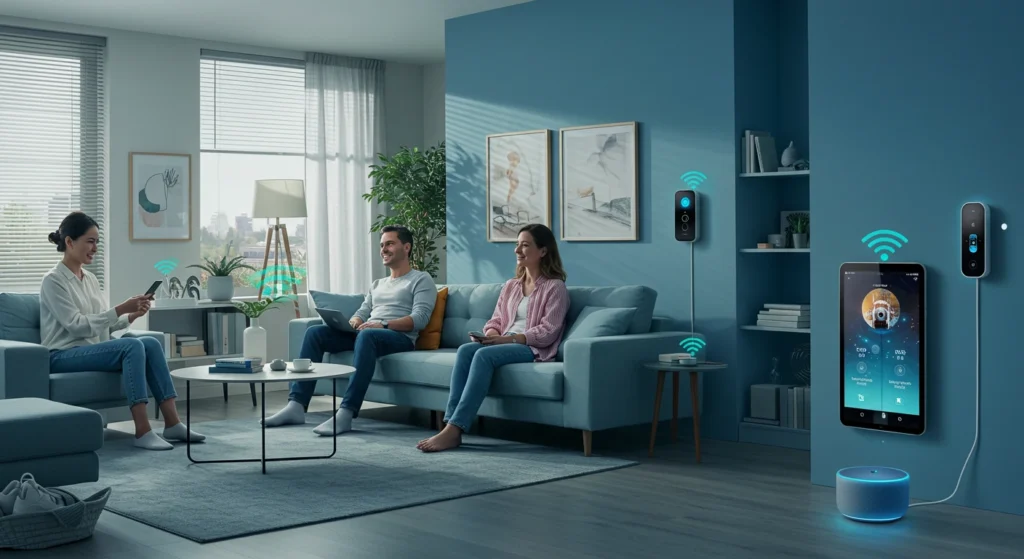
Table of Contents
Introduction
Imagine waking up to the aroma of freshly brewed coffee, your blinds opening automatically, and your thermostat already adjusting to the ideal temperature—all without you having to do anything. Does that sound futuristic? That is the current miracle of smart home technology! I can still clearly recall my initial experience installing a smart lightbulb. “How hard could it be?” I asked myself.
However, I sat in the dark, confused, after a few frustrating hours of trying to connect it to Wi-Fi. But after I finally got it right, automation changed my house, and I never turned back. This book provides engaging insights and helpful advice to answer your questions about smart home technology, including what it is, how it operates, and whether upgrading is worthwhile.
What Is Smart Home Technology?
Smart home technology refers to gadgets that link to a network via Wi-Fi, Bluetooth, or Zigbee to automate and control many parts of your house. These gadgets easily integrate into daily life, making it easier, safer, and more energy efficient.
- Definition & Integration: At its core, smart home tech combines appliances, lighting, security systems, and more into one interconnected ecosystem.
- A Brief History: Home automation started as a niche market but has evolved into a mainstream necessity driven by advancements in connectivity and AI.
- Connectivity: Most smart devices communicate via Wi-Fi, Bluetooth, Zigbee, or Z-Wave. Learn more about connectivity in our Smart Home Connectivity 101.
How Does Smart Home Technology Work?
Setting up a smart home may appear simple until you attempt to connect ten different gadgets to Wi-Fi, each with its own app. Trust me, the learning curve is real!
Smart home technology is based on the Internet of Things (IoT), which means that gadgets “talk” to one another over the Internet. Smart homes frequently employ cloud-based control systems, smart hubs, and voice assistants (such as Alexa or Google Assistant) to automate everyday tasks.
- Devices & Communication: Some gadgets require a hub to relay commands, while others connect directly. For example, when you ask Alexa to “turn off the lights,” she sends a command through your home network, and the lights comply.
- Automation: Intuitive mobile apps allow users to set up routines such as “Movie Night,” during which the lights dim, the TV turns on, and the thermostat adjusts.
- Interactive Experience: Try our Voice Command Simulator to see how quickly your home can respond to a command!
Benefits of Smart Home Technology
- Numerous advantages provided by smart home appliances make daily living safer, more sustainable, and more convenient.
1. Accessibility & Convenience
- Hands-Free Operation: Use voice commands or a smartphone tap to operate your house.
- Remote Access: Control the systems in your house from any location in the world.
- Improved Accessibility: This is Perfect for elderly people and anyone with limited movement.
- Interactive Tip: Use our Custom Alert Builder to personalize your smart home configuration.
2. Efficiency in Energy Use
- Smart Lighting & Thermostats: Reduce electricity costs by automatically adjusting settings.
- Energy Monitoring: To maximize efficiency, track usage in real-time.
- Sustainable Living: Cut back on wasteful energy use to help create a better world.
- Interactive Tool: To see how much you could save, use our Energy Savings Calculator.
3. Enhanced Security
- Smart Locks & Video Doorbells: Keep your home secure with real-time alerts and remote monitoring.
- Automated Alerts: Receive notifications if unusual activity is detected.
- Peace of Mind: Smart cameras and sensors provide an extra layer of safety.
- Interactive Feature: Explore our Home Security Simulator to test different security scenarios.
Popular Smart Home Devices & Categories
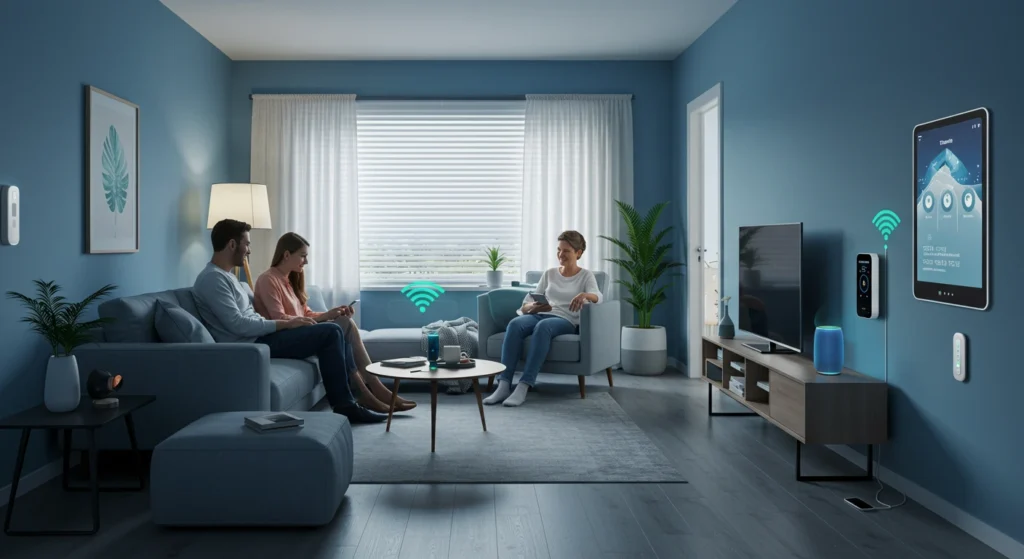
Smart home technology spans various categories, each designed to enhance a specific aspect of your living space.
| Category | Popular Devices | Key Benefits |
| Smart Speakers & Assistants | Amazon Echo, Google Nest | Voice control, hands-free convenience |
| Smart Lighting | Philips Hue, LIFX | Customizable ambiance, energy efficiency |
| Smart Security | Ring Doorbell, Nest Cam | Real-time monitoring, improved safety |
| Smart Thermostats | Nest, Ecobee | Temperature control, energy savings |
| Smart Appliances | Refrigerators, Washing Machines | Enhanced functionality, remote monitoring |
Challenges & Concerns of Smart Homes
While the benefits are impressive, smart home technology comes with its own set of challenges.
- Privacy & Data Security: Your home’s increased connectivity creates more data, which raises questions about potential illegal access.
- Compatibility problems: Matter and other standards attempt to address the fact that not all devices work well together.
- High Initial Cost: Although long-term savings can balance this expenditure, the initial outlay may be substantial.
- Technical glitches: Occasionally experiencing troubleshooting and connectivity problems can try your patience.
- Interactive Workshop: Get advice on maintaining your smart home network by attending our troubleshooting webinar.

Future Trends in Smart Home Technology
The future of smart home technology is both exciting and transformative.
- AI-Driven Automation: Advanced AI will anticipate your needs even before you speak them.
- Matter Protocol: A new standard to ensure all devices, regardless of brand, communicate seamlessly.
- Sustainable Innovations: Eco-friendly smart devices will help reduce your carbon footprint.
- Smart Cities: The interconnected home will be the building block for larger, smarter urban environments.
- Interactive Forecast: Explore our Future Trends Dashboard for insights into upcoming innovations.
Getting Started with Smart Home Tech
Starting your smart home journey can be simple and rewarding.
- Beginner-Friendly Setups: Start small with a smart speaker or thermostat.
- DIY vs. Professional Installation: Decide whether you want to set up your devices yourself or hire experts.
- Security Tips: Ensure your devices are secure by regularly updating firmware and using strong passwords.
- Interactive Guide: Use our Smart Home Starter Kit guide to plan your initial setup.
Smart Home Entertainment & Connectivity
An emerging trend in smart home technology is enhancing your entertainment and connectivity experience.
- Integrated Systems: For a smooth multimedia experience, connect your gaming consoles, speakers, and smart TV.
- Voice-Controlled Entertainment: To change stations, play movies, or change the volume, use voice commands.
- Interactive Setup: Use our Entertainment Configurator to create unique entertainment scenes (such as “Family Game Night” or “Home Theater Mode”).
- Improved Connectivity: With strong network solutions, take advantage of consistent streaming and connectivity on all devices.
Conclusion
Smart home technology isn’t just a futuristic dream—it’s the reality of modern living. From automating mundane tasks to boosting your home’s security and energy efficiency, these devices offer practical, life-enhancing benefits. Although challenges like data privacy and initial costs exist, the convenience and efficiency gains make smart home tech a worthy investment. Whether you’re just starting with a simple smart speaker or planning a full-scale home automation upgrade, there’s never been a better time to embrace innovation.
Are you already living the smart home life? Share your experiences in the comments below and join the conversation!
FAQs
What is the purpose of smart home technology?
Smart home tech automates and controls household devices, improving convenience, security, and energy efficiency.
Is smart home technology expensive?
It depends! Basic setups start under $100, but full automation can cost thousands.
Are smart homes secure from hackers?
Yes, but only if you use strong passwords, enable two-factor authentication, and keep firmware updated.
Do smart devices work without the internet?
Some do (like Bluetooth devices), but most require an internet connection for full functionality.
Can I install smart home devices myself?
Absolutely! Many devices are DIY-friendly, though some systems (like security setups) may need professional installation.
What is the best smart home system?
Popular choices include Amazon Alexa, Google Nest, and Apple HomeKit—each with its strengths.
How do I start building a smart home?
You can begin with a smart speaker (such as an Echo or Nest Hub) and gradually add devices like smart bulbs or thermostats.
Do smart homes save money on energy?
Yes! Smart thermostats and lights can significantly reduce electricity bills over time.
What is the biggest downside of smart homes?
Privacy concerns and compatibility issues between brands are the most common drawbacks.
What’s the future of smart home technology?
AI-driven automation, improved security, and seamless integration with eco-friendly systems.
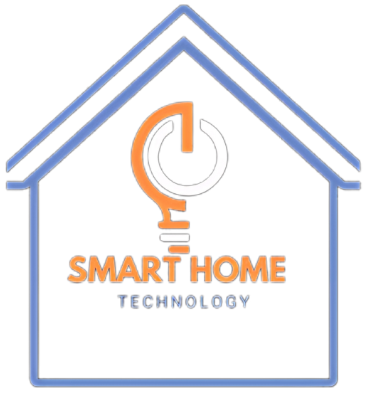
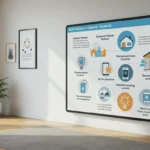

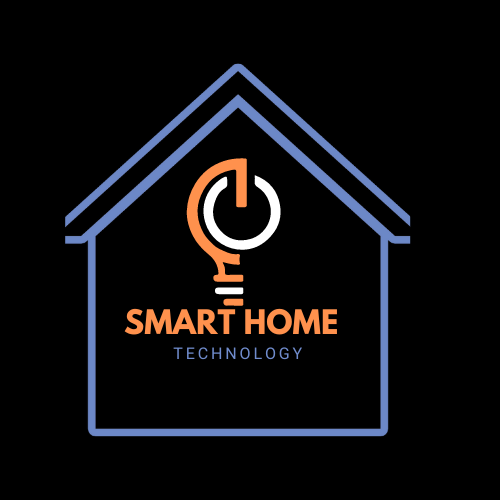
Pingback: How Does Smart Home Technology Work? (2025 Guide for Beginners & Experts) - smarthomze.com
Pingback: Future Trends in Voice-Controlled Smart Home Technology (2025 Update) - smarthomze.com